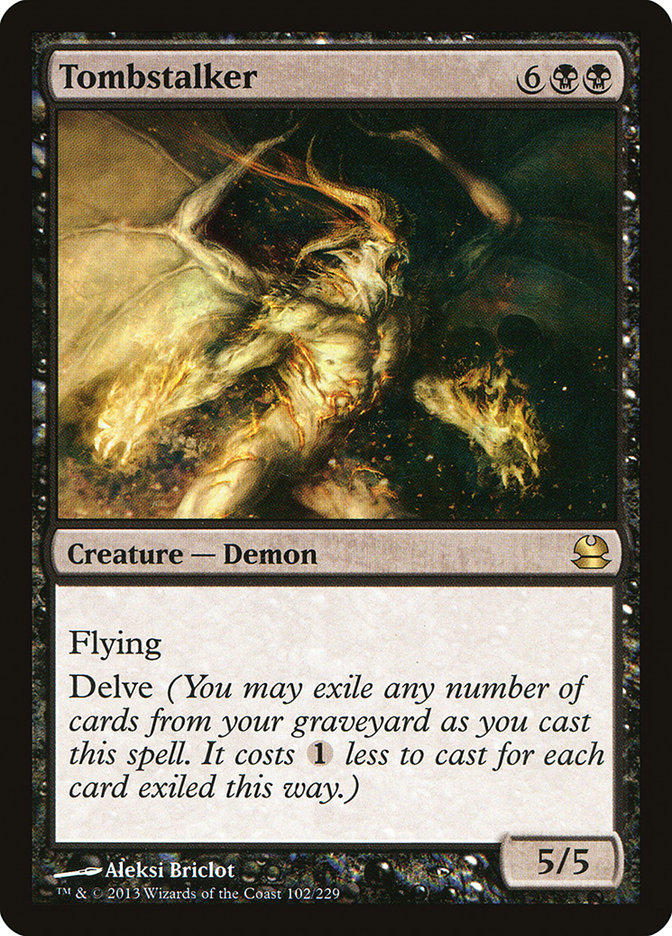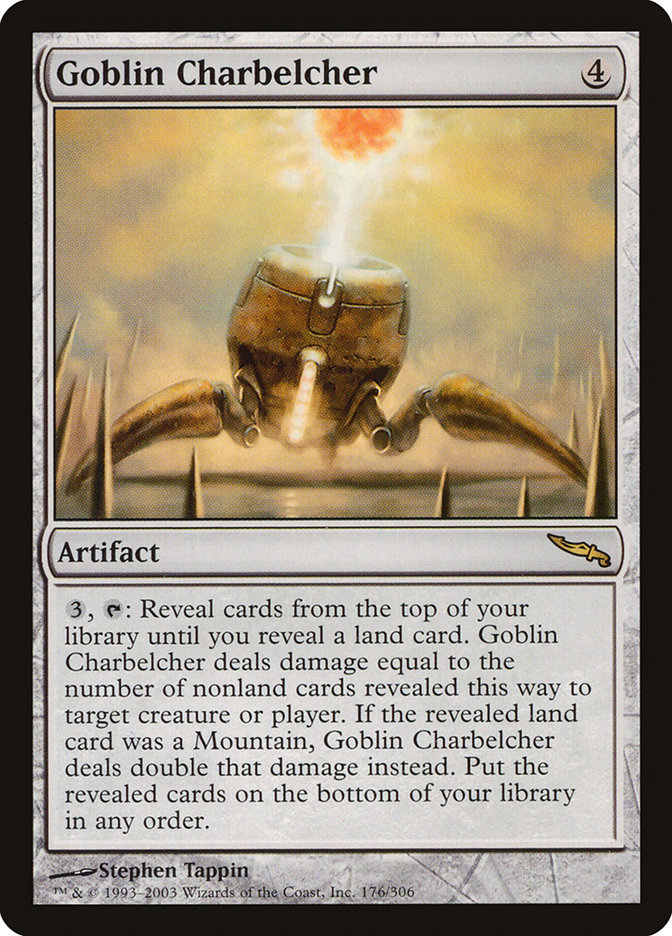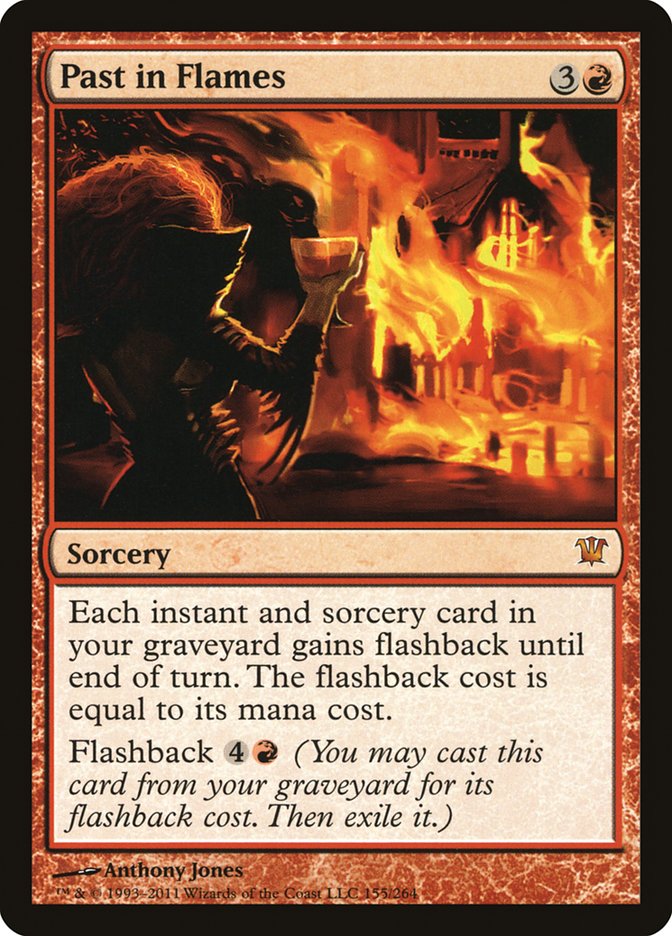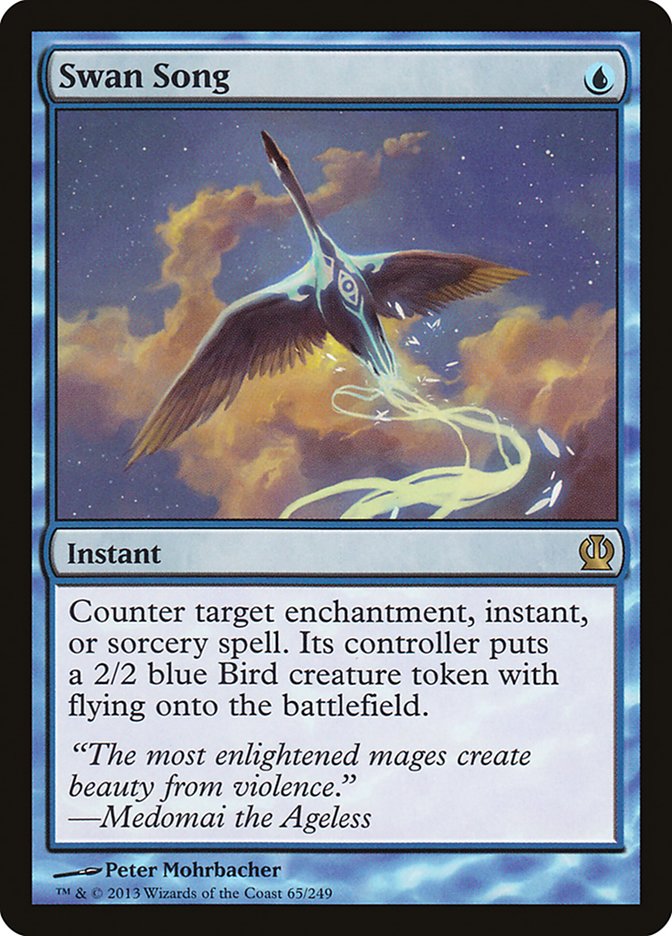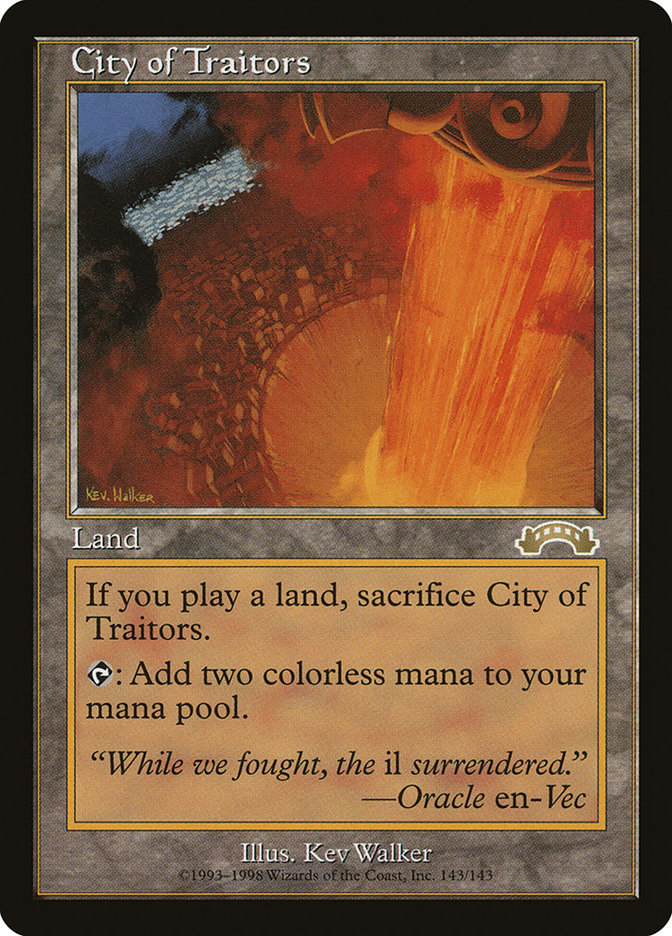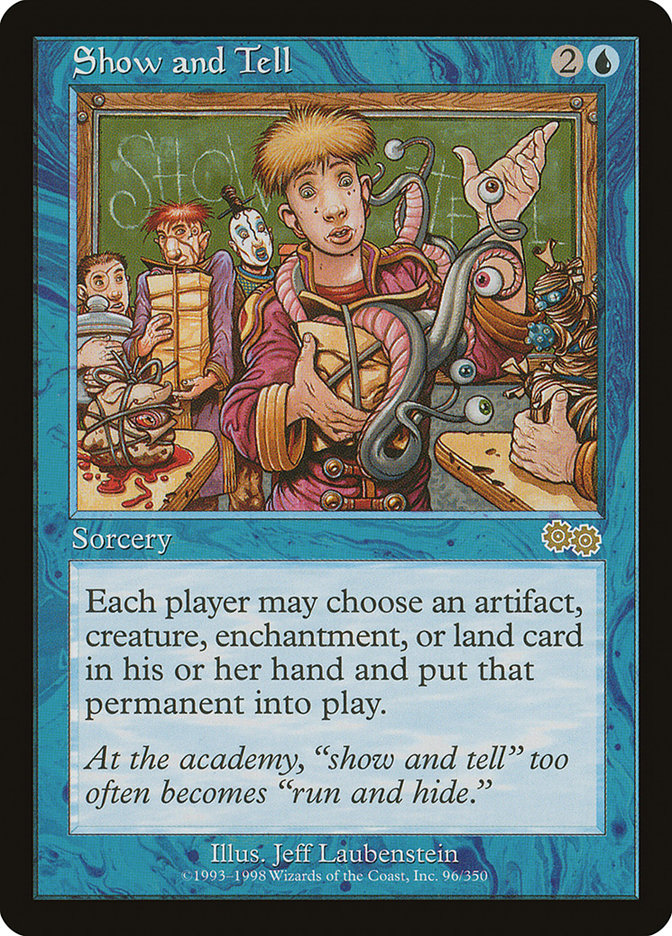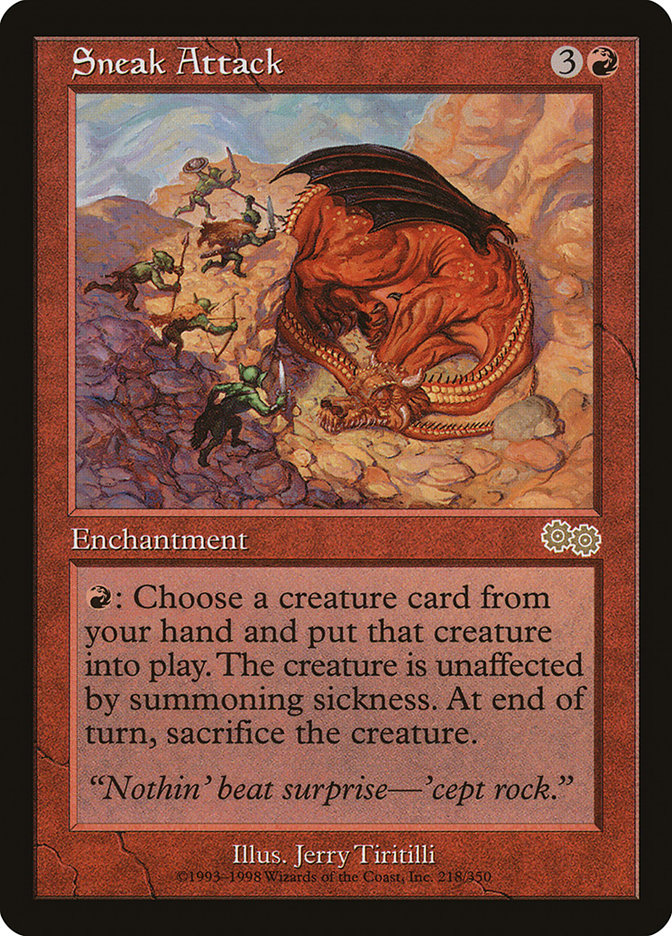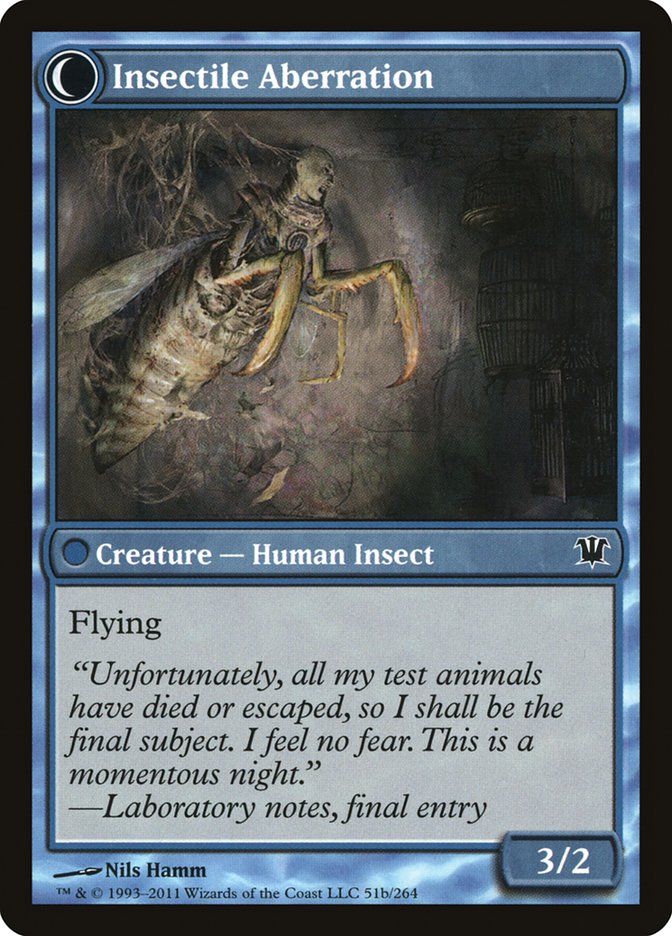This is not a normal set review. I will not be going through the Theros spoiler color by color and telling you what will and will not be good in Legacy.
I want to use this space to contrast some of the set mechanics in Theros with set mechanics of past sets.
This is because Theros looks like an excellent Limited set, an exciting Standard set, a triumphant flavor set, and a terrible Legacy set. While some of you will surely be satisfied stopping at that conclusion—"Well, I guess I don’t have to buy two boxes of this set!"—there’s still a lot to learn from why Theros isn’t going to make a huge impact in Legacy.
Here’s your TL;DR: Swan Song is playable in some decks, Ashen Rider will replace Angel of Despair, Fade Into Antiquity will not replace Hull Breach, and Destructive Revelry will replace neither Krosan Grip nor Ancient Grudge.
There are four major reasons why Theros won’t make a splash in Legacy. The first?
Everything Is Overcosted
There are a bunch of sweet midrange cards in Theros. Board presence is emphasized, and games look like they’ll go reasonably long. Card advantage will matter, and creature combat will feature heavily.
Very little of that is true in Legacy. People don’t want to pay more to get more impact. People want to pay less so that their spells don’t get Dazed, Spell Pierced, or Flusterstormed. They don’t want to have cumbersome mana bases that punish them in late-game topdeck wars just so they can afford their five-drop.
Bestow is a great set mechanic for Limited. It’s like kicker—you have a normal mode, and then you have a "pay more, get extra" mode. That doesn’t fly in Legacy.
Lingering Souls is one of the best "pay more, get extra" cards in Legacy precisely because the "get extra" part isn’t tacked onto the original mana cost. Getting to split up your mana costs over several turns makes that card Legacy playable. Bestow doesn’t work like that, so we aren’t likely to see Boon Satyr and friends showing up any time soon when four green mana gets you a Natural Order for Progenitus or Craterhoof Behemoth.
So what’s the takeaway here? Look for mechanics that reduce cost, obviously.
Here is the two-mana Legacy-playable creature that everyone talked about when Future Sight got spoiled:
Tombstalker, not Tarmogoyf, was the card that most Legacy players hyped leading up to Future Sight’s release. Small pockets of Legacy aficionados realized Tarmogoyf’s power, but it was far more subtle. A BB 5/5 flier was very obviously good because the delve mechanic is the exact sort of thing that shows up in Eternal formats.
At its core, delve is a way to convert one low-value resource (cards in graveyard) into a high-value resource (mana). Similarly, bestow converts a low-value resource (your seventh land) into a high-value resource (a delayed-release copy of the creature you’re casting as an Aura).
The difference, of course, is that delve asked for a resource that Legacy creates a lot of, whereas bestow’s ideal game state never exists in Legacy. People don’t have seven lands in play. Lands get destroyed all the time in Legacy. Mana sinks are far less powerful because mana is harder to come by and you could just be dead before you have any spare mana.
There are four-drops that see play in Legacy, rare though they may be.
They just all happen to win the game.
Hell, even some of the three-drops win the game. Show and Tell, anyone?
This is what bestow, monstrosity, and the Gods have to compete with. In that light, they prove lacking.
When you’re looking at a new set for Legacy cards, cost sort your spoiler. You’ll save a lot of time.
The next reason why Theros won’t do well in Legacy?
Devotion Is Bad In A Multicolor, Spell-Driven Format
The core interaction of Legacy is the fetch land-into-dual land mana base. People play three or more colors in their tempo, midrange, control, and combo decks because it doesn’t have a cost.
I mean, sure, Wasteland is a cost, but what are you going to do? Play ten basic lands? Get real. Wasteland is a cost that you almost always have to pay if you want to play with the most powerful cards.*
*Except for Omni-Tell, but really, who wins with that deck?
My point is that you can play all five colors in your midrange deck if you want. Devotion cards want you to commit to their color. The obvious solution, unfortunately for Theros, is to ignore the devotion payoffs and keep playing Delver of Secrets into Tarmogoyf into Lightning Bolt.
The other problem with devotion is that it gets worse and worse as formats become more efficient. Devotion relies on cards interacting with each other. Those interactions are the sum of two separate mana costs.
There are many hyperefficient spells that break up those interactions.
When these cards break up devotion interactions, they’re essentially gaining value equal to the amount of mana you sunk into trying to make that interaction happen. Given how little mana you get over a typical Legacy game, getting your investment blown out by those spells is an easy way to lose.
In a format like Limited, you get access to lots of mana over the course of the game. In many Limited formats, card advantage matters more than mana efficiency because you’ll have an opportunity to play your spells before you’re dead. When you get to play your spells with fewer disruptions, you are incentivized to seek out and play with the strongest interactions. In those situations, devotion will shine.
Beyond its inefficiencies, devotion also plays on the board. Legacy is a format that doesn’t reward playing on the board all that much. Its most powerful cards are all spells – cantrips, discard spells, mana producers, tutors, bannable combo centerpieces, and so on. Wild Nacatl is a safe four-of in this format because it’s pretty bad.
When your best things are happening in play, people can beat you with any of a number of incredibly board-antagonistic cards from Magic’s history. Swords to Plowshares and Lightning Bolt are ubiquitous, but Pernicious Deed and Vindicate are still really good rates for what they do. If you’re just putting things into play and making things happen there, your opponents will have access to a lot of ways to stop you.
Legacy’s successful combo decks are all based around either the graveyard or the hand. Dredge, Show and Tell, and Storm force people to play narrower cards to beat them. Devotion (and similar mechanics) runs into a brick wall of very basic and commonplace interaction. A mechanic that tells you to play a lot of monochrome permanents, while intrinsically interesting, is not extrinsically compelling in a format as high-powered as Legacy.
What’s the next problem that Theros has in Legacy?
Heroic Is Narrow
The first time I read heroic, I thought it was a Cephalid Illusionist mechanic. I thought that Shuko would spike to be a zillion dollars and that Anax and Cymede plus Lightning Greaves was Good Game.
Then I reread heroic.
Turns out it wants you to play, like, Giant Growth.
The closest that Giant Growth has come to seeing play in Legacy is here:
Creatures (14)
Lands (18)
Spells (28)
- 1 Rancor
- 4 Brainstorm
- 4 Daze
- 4 Berserk
- 4 Invigorate
- 3 Might of Old Krosa
- 4 Vines of Vastwood
- 4 Gitaxian Probe
Sideboard

In other words, not very close. Again, heroic runs into three problems in Legacy:
1. It wants you to play creatures.
2. It wants you to play spells that are only doing their job if you’re targeting your creature with it.
3. I guess then you’re supposed to attack with your creature?
I don’t need to spell out exactly how cheap and splashable removal is good against pump spells. You get it. But seriously, creatures are so rarely just for attacking in Legacy. Tarmogoyf is a standout precisely because it is the best card in Legacy at just having a power and toughness. All the other ones do . . . things. Lots of different things, to be sure, but things nonetheless. More than "attack and/or block." That’s why the successful aggressive decks are either tribal decks jam-packed with synergy or Maverick style decks full of smaller utility creatures.
The problem is that your heroic enablers aren’t really useful. When you’re fighting long games, your spells have to be worth at least a card. Heroic triggers and the cards that create them don’t pass that test.
What’s the last reason that Theros isn’t a great Legacy set?
Scry Is Obsolete
People play exactly one scry card in Legacy: Preordain.
And it’s banned in Modern.
It stands to reason that every scry spell that gets printed from now on must be weaker than Preordain or else it too will risk destroying a Standard format.
Legacy decks split into two basic camps: power and consistency. If you’re playing a powerful deck, it means that the difference between your best card and your worst card is very high. It means that some draw steps can win you the game and others will be complete blanks. In order to improve your chances of winning, you will end up playing a lot of cantrips—cheap blue sorceries and instants that regulate your draws.
You know them as Brainstorm, Ponder, Preordain, and Gitaxian Probe.
By drawing multiple cards each turn—in practice, not volume—you increase your odds of drawing a copy of your strongest card. Scry’s design is similar; if you can articulate what you’re looking for, you can choose to draw (or not draw) cards that fit the description.
Consistent decks play as many copies as possible of the same basic card. Merfolk is a great example of this, as all of its cards are basically two-power creatures for two mana that Glorious Anthem their other creatures. They don’t want Brainstorm because every Brainstorm is going to see two identical Merfolk and a land. Who cares? Just spend your mana casting Merfolk. Your deck is redundant.
Can you imagine playing Brainstorm in Burn? I’d rather play Mana Severance. That’s what you’re trying to do with the card anyway: draw more action and undraw some lands.
And then, you know, draw eight running Lightning Bolts.
Casting Brainstorm and drawing Lava Spike, Chain Lightning, and Rift Bolt is a waste of a mana.
Scry performs the same basic function as cantrips, only it does so at a worse rate. That isn’t a bad thing—decks shouldn’t be too consistent or the opponent’s play experience will suffer. But if you’re trying to manipulate the vicissitudes of fate, you can do better than scry 1.
There isn’t much of a takeaway here, as the crux of the issue is that scry is a less powerful version of something that defines the format. Wizards will never, ever make a better Brainstorm. They should be expected to make quite a few worse ones.
Now that we’ve gone over why the meat of a very mechanically driven set isn’t cooked right for Legacy, what’s left over? Ah yes, the one card that will definitely see Legacy play:
Want to know how a card will see play in Legacy? It’s a one-mana blue noncreature that either counters a spell or draws a card.
Swan Song is a hard counter for three types of spells, all of which can kill you in Legacy. I have played Annul, Envelop, and Dispel in Legacy decks before. So how can we evaluate this card, and where does it belong?
The two best comparisons for Swan Song are Spell Pierce and Flusterstorm. Each comparison invites the same question: can they pay two or three extra mana for their spell? If they can’t, Spell Pierce is better. If they are likely to have their own countermagic, Flusterstorm is likely better.
But what about situations where they could cast either a sorcery or an enchantment off of a Sol land but you won’t know until the time comes?
Omni-Tell and Sneak and Show are excellent decks precisely because they can adapt their game plan to beat opposing hate. Flusterstorm can’t counter Dream Halls or Sneak Attack. It’s very plausible to assemble five mana and Show and Tell to beat Spell Pierce. But Swan Song? Swan Song counters everything important.
Now that we know why we want Swan Song (the combo deck of choice in your metagame is based around Show and Tell), in what deck should we play it?
RUG Delver is the obvious first look. It plays lots of different blue instants, so why not Swan Song?
Two toughness on Insectile Aberration, that’s why.
The Swan trades with your best creature, which is a big issue. You generally want to cut Stifles and Bolts against Omniscience, and Bolt is only good against the bad Sneak Attack players who block Delver of Secrets with Griselbrand instead of Nimble Mongoose.
What’s next?
Well, what about decks that don’t care about attacking? Surely those decks would like this card since combo decks don’t put a lot of pressure on your life total. Imagine a Sneak Attack versus Omni-Tell matchup.
Both players need to be able to kill their opponent on the turn that they cast Show and Tell or else risk the huge likelihood that they die on their opponent’s subsequent turn to whatever that player brought to class.
Both players have a castable enchantment that mostly wins them the game.
If you’re just passing back and forth, setting up your position, and developing your mana, isn’t Swan Song one of the best cards you could have? Red Blast is better out of Sneak Attack, but what about Omniscience? They’re mono-blue, so they don’t have access to a ton of tools. Why not be able to Cunning Wish for a Swan Song? I don’t know whether it’s right, but it’s not absolutely wrong.
Let’s go further. What about in purer control decks? Would U/W/(R) Miracles like Swan Song? It counters Sneak Attack and Dream Halls, and the 2/2 doesn’t matter because Jace can Unsummon it. It’s worse than Flusterstorm against RUG Delver, but I think I’m the only person who enjoys Flusterstorming RUG’s Ponders and Brainstorms.
My guess? Swan Song will share space with Flusterstorm in blue control and combo sideboards. If you want Flusterstorm, you should consider whether you want Swan Song instead.
Outside of that consideration, Theros doesn’t have much to offer Legacy. I wish I had something more for you, but this isn’t the most exciting fall set for Eternal players.
Check back tomorrow for videos from a Legacy Daily Event with Affinity!
Until then,
@drewlevin on Twitter

